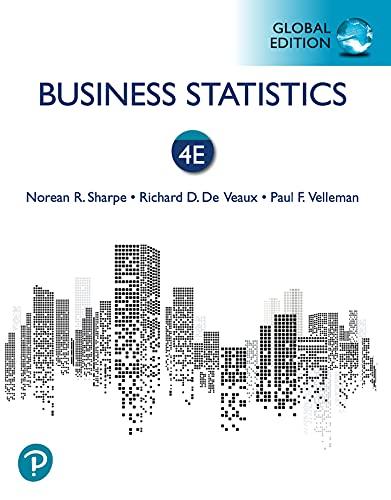Lobsters 2016, revisited, part 2. In Chapter 17, Exercise 54 predicted the price ($/lb) of lobster harvested
Question:
Lobsters 2016, revisited, part 2.
In Chapter 17, Exercise 54 predicted the price ($/lb) of lobster harvested in the Maine lobster fishing industry. Here’s a multiple regression to predict the Price from the number of Traps (millions), the number of License Holders, and Pounds/Trap during the years 1950 to 2016.
Response variable is: Price/lb R squared = 94.1% R squared (adjusted) = 93.8%
s = 0.3127 with 67 - 4 = 63 degrees of freedom Variable Coefficient SE(Coeff) t-ratio P-value Intercept 0.729693 0.3191 2.29 0.0256 Traps(M) 1.26703 0.0417 30.4 60.0001 License holders
-0.000134 0.0000
-3.66 0.0005 Pounds/Trap -0.006075 0.0039 -1.54 0.1276
a) Write the regression model.
b) Are the assumptions and conditions met?
Here is an alternative regression model predicting the logarithm of Price/lb:
Response variable is: Log(Price/lb)
R squared = 95.1% R squared (adjusted) = 94.8%
s = 0.0810 with 67 - 4 = 63 degrees of freedom Variable Coefficient SE(Coeff) t-ratio P-value Intercept -0.049433 0.0826 -0.598 0.5518 Traps(M) 0.328341 0.0108 30.4 60.0001 License holders -0.0000276 0.0000 -2.91 0.0050 Pounds/Trap -0.0077 0.0010 -7.60 60.0001
c) Which regression model would you prefer? Why?
d) State and test the standard null hypothesis for the coefficient of License Holders in the second model.
e) Does the coefficient of Pounds/ Trap mean that when more lobsters are landed per trap the price of lobsters will decrease?
Step by Step Answer:

Business Statistics
ISBN: 9781292269313
4th Global Edition
Authors: Norean Sharpe, Richard De Veaux, Paul Velleman






